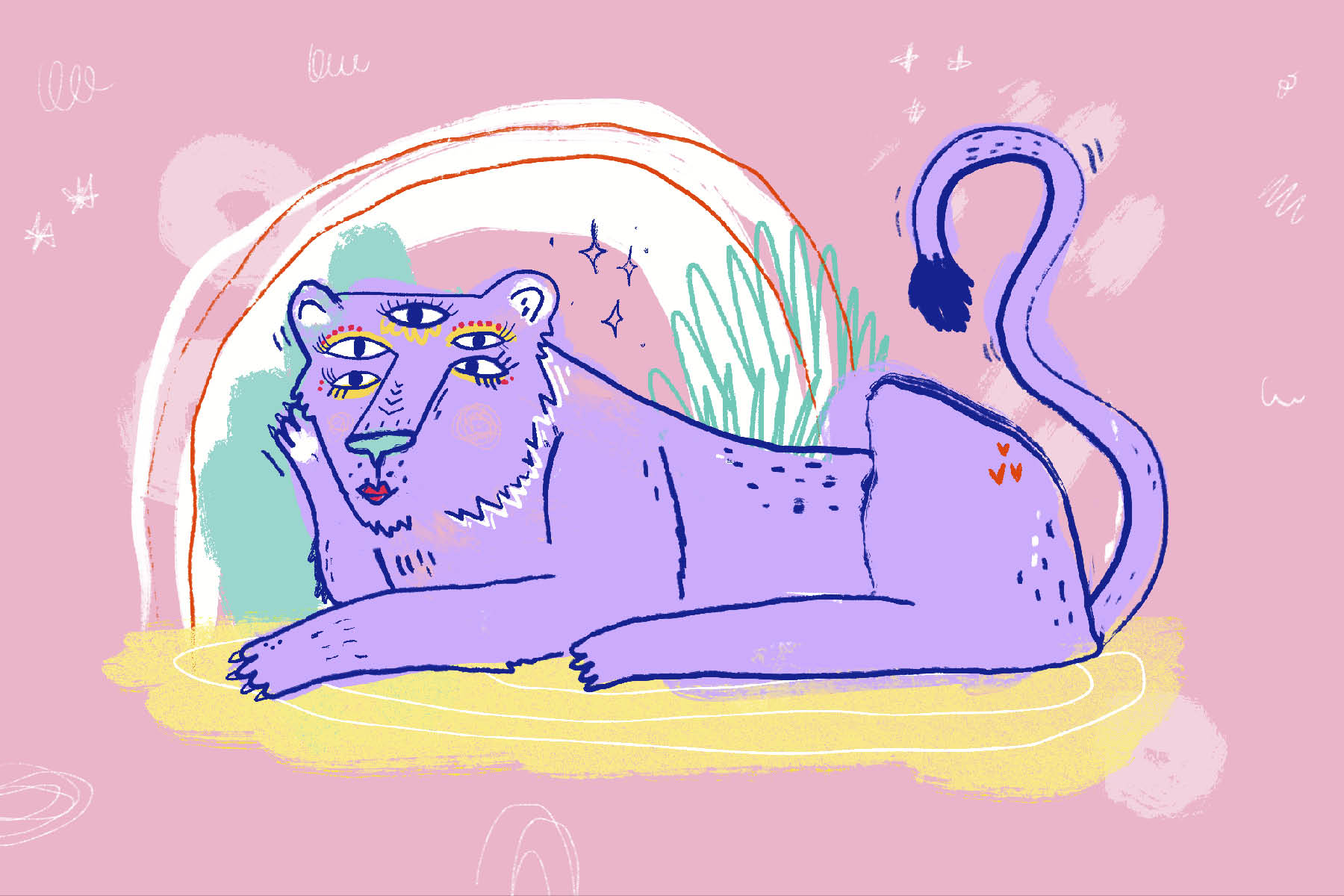
- Home |
- Search Results |
- The ‘strumpet’ lioness: how nature subverts clichéd sex roles
The ‘strumpet’ lioness: how nature subverts clichéd sex roles
In this essay from author and zoologist Lucy Cooke’s Bitch: A revolutionary guide to sex, evolution and the female animal, a female lion exemplifies the multifarious nature of sex and gender in the animal kingdom – and what humans might learn from it.
I once roared so loud I stole a lion’s girlfriend. The roar itself didn’t actually leave my mouth, it was a recording of a male lion, played out of a loudspeaker. I was in the Maasai Mara with Dr Ludwig Siefert, a lion specialist, who was demonstrating the use of audio playback in deciphering lion communication. This involved the two of us standing with our heads poking out of the top of his jeep, under the cover of night, pumping the sound of a dominant male’s roar into another lion’s territory, an audacious way to pursue scientific enquiry and which struck me as the feline equivalent of screaming, ‘Come and have a go if you think you’re hard enough,’ outside a rough pub at chucking-out time.
At first I felt faintly silly projecting our tinny growls into the night. An MP4 and a portable speaker can hardly do justice to the roar of the lion, which at 114 dB is the loudest of any of the big cats. The roar itself is generally less majestic than the one that starts an MGM movie – more of a series of rumbling low grunts – but with the bass-y resonance to carry for up to five miles. I assumed that our distorted facsimile would arouse little interest. But after a few minutes’ silence there came a distant response. Over the next 30 minutes or so we played audio ping-pong with the neighbourhood lion, whose roars became increasingly louder until they made my heart thump, skin prickle and palms sweat.
Out of the gloom emerged not one, but three big cats – two males and a female. All of a sudden our safari vehicle felt rather vulnerable in the face of half a tonne of agitated muscle, teeth and claws. The lions padded around the vehicle, looking for something that looked and smelt like a male lion. When they found nothing, the two males wandered off, but the female lay down in front of our vehicle, pinning us to the spot for over an hour.
Siefert knew these lions. He explained that the males were brothers, and that the female was likely in oestrus and consorting with one of them. Siefert told me the reason she had chosen to abandon her mate and remain by the source of our roar was probably because she was hoping to cop some extra-curricular sex with its owner. Stealing a lion’s girlfriend is apparently not that hard. It’s not unusual for a lioness to be spotted creeping away from her napping partner in order to engage in saucy trysts with other males. Such wanton duplicity is apparently standard form for the lioness, whose promiscuity is famous amongst big cat researchers – a female lion is known to mate up to one hundred times a day with multiple males during oestrus.
I was shocked and quietly thrilled to discover the licentious nature of the female lion. As the infamous ditty by the philosopher William James attests, everyone knows it is the male of the species that enjoys a profligate sex life, not the female. When I was a zoology student, I was taught that this was the male’s biological imperative, written not in stone but in gametes. Anisogamy – the fundamental difference in gamete size, from the Greek, meaning ‘unequal’ and ‘marriage’ – is said to define not just the sexes but also their behaviour. Sperm are small and bountiful, whereas eggs are large and limited; so males will be promiscuous and females will be choosy and chaste.
'The time is long overdue for a radical reappraisal of anisogamy’s clichéd sex roles – if only our species is ready to accept them'
‘Excess copulations may not actually cost a female much . . . but they do her no positive good. A male on the other hand can never get enough copulations with as many different females as possible: the word excess has no meaning for a male,’ explained my tutor, Richard Dawkins, in The Selfish Gene.
This biological law always made my head (and heart) hurt. How could one sex be promiscuous and the other chaste – after all, who were the males having sex with if the females were all so demure? It didn’t make sense to me. And if a female’s sexual behaviour is prescribed by her gametes, then how can we explain the unrestrained sexuality of the lioness?
Well, it turns out the female lion is by no means the only strumpet in the animal kingdom. The time is long overdue for a radical reappraisal of anisogamy’s clichéd sex roles – if only our species is ready to accept them.
This is an extract from Lucy Cooke’s Bitch: A revolutionary guide to sex, evolution and the female animal. To continue reading about the subversive ‘strumpets’ of the animal kingdom, flip to the book’s Chapter 3: The Monogamy Myth.
Image: Anna Kiosse